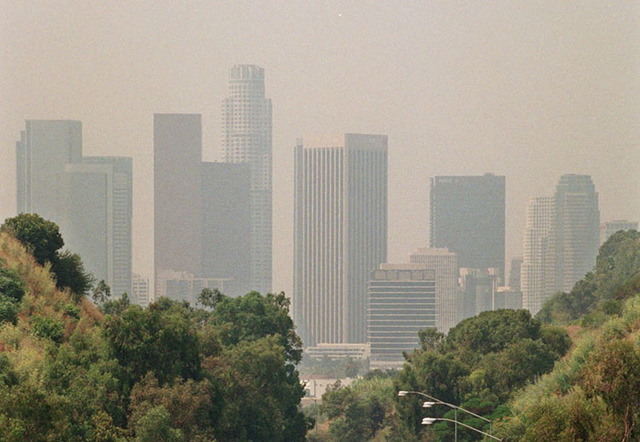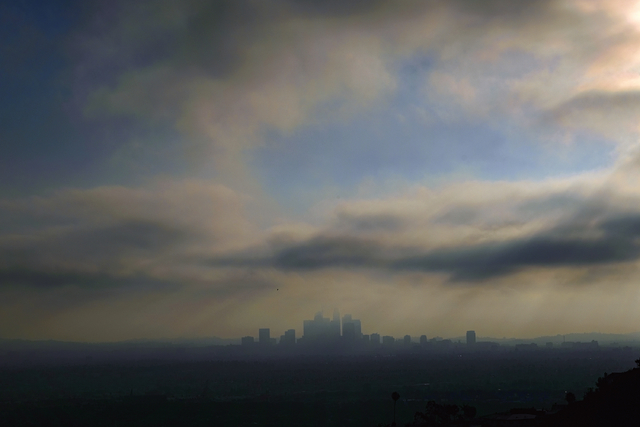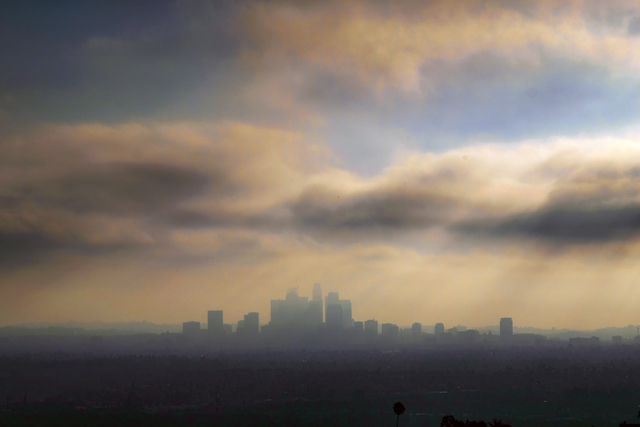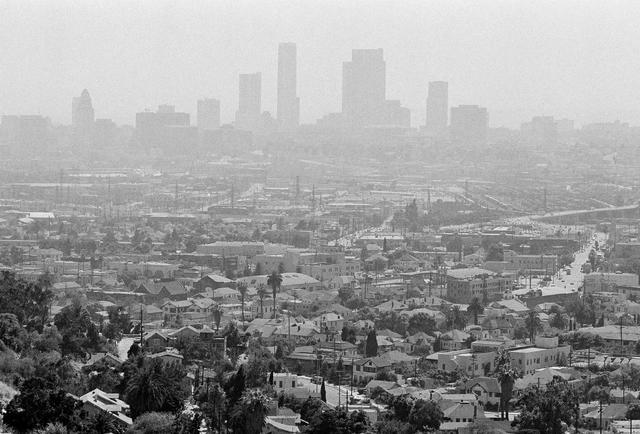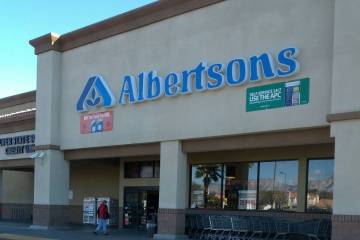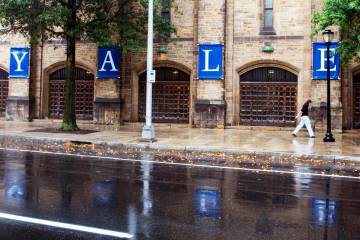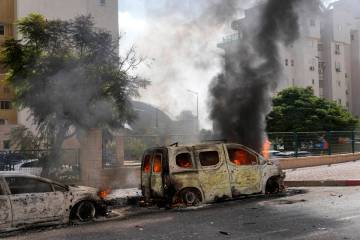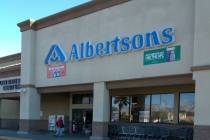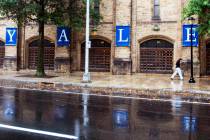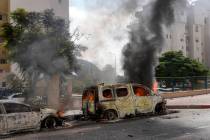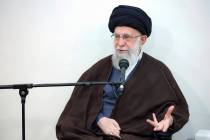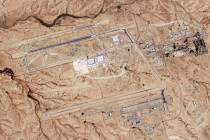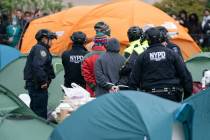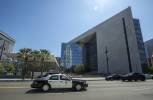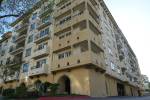Southern California enduring smoggiest summer since 2009
LOS ANGELES — Southern California sunshine means sparkling beach weather, but this summer it’s contributing to a return of a traditional nemesis: smog.
The enormous region that stretches from the Pacific Ocean to the Mojave Desert is having its worst summer air quality since 2009, regulators said Thursday.
Huge wildfires have fouled the air with ash and soot in some localized areas, but the big problem is seasonal ozone. The emissions from cars, refineries and other sources react to sunshine to produce a lung-stinging pollutant.
Although the air is nowhere near as foul as in the bad old days of the 1970s, when skies were a miasmic yellow or brown, ozone levels continue to exceed federal standards and hospitals in the smoggiest areas report an uptick in asthma patients.
In the past two or three months, there has been a 30 percent spike in the number of people with asthma and chronic obstructive pulmonary disease seeking help for breathing difficulties, Dr. Laren Tan said. He directs Loma Linda University Chronic Obstructive Pulmonary Disease & Asthma Network Clinic, located at Loma Linda University Medical Center east of Los Angeles.
“They’re having to use their rescue inhalers more, they’re having to use their rescue steroids more, and they’ve actually had to go to urgent care,” Tan said.
“It’s very worrisome especially if our air quality continues to worsen,” he said.
Southern California’s ozone season runs from May to October.
ROUGH SUMMER
June saw only four days of air quality that didn’t exceed federal ozone standards; July had just one day and so far August hasn’t had a single day of good air, according to the South Coast Air Quality Management District, the smog control agency for all or portions of Los Angeles, Orange, Riverside and San Bernardino counties.
The ozone level peaked on July 22 at 164 parts per billion at Crestline in the San Bernardino Mountains — more than twice the federal limit of 70 parts per billion. It was the worst day of ozone smog since 2009.
As of Wednesday, there had been 93 days this year when ozone levels exceeded federal standards — compared to 69 last year over the same period — and the tally could hit 100 days before summer ends, AQMD spokesman Sam Atwood said.
Tim Aslin, a 37-year-old feature film writer who lives in Los Angeles, says he can feel it.
“I get pretty bad allergies, like respiratory allergies, and I notice it more in my sinuses,” he said. “I’m quite congested.”
Jesse Hoffman, a 27-year-old skin care consultant, moved to Los Angeles from San Francisco three years ago.
“It’s dusty, dry and uncomfortable,” he said. “My breathing changed a lot after moving here, particularly in the first six months, I really thought that there was something a lot more wrong with me than there was.I think it just took time for my body to get used to L.A.’s air.”
“I hike a lot and I can definitely see the smog,” he said. “On bad days you can see a layer of smog over the city.”
BLAME THE WEATHER
Weather is the big factor in summer pollution. Hot, stagnant air can trap the smog under an inversion layer, and Southern California has seen episodes of record-breaking heat.
Because of wind patterns, a lot of that smog is swept to the mountains north and east of the Los Angeles metropolitan area, reacting with sunlight along the way and winding up inland, Atwood said.
In June and July, Dignity Health Community Hospital of San Bernardino probably saw a 15 percent rise in the number of people coming to the emergency room with respiratory problems, said Dr. Cameron Nouri, medical director of emergency services.
The conditions ranged from mild asthma to people needing mechanical breathing aid, with the most serious conditions “at both extremes of age, very young and very old,” he said.
People with pre-existing respiratory problems are most vulnerable, he said.
Nouri recommended that people stay indoors and ease off exercise on extremely hot or polluted days.
Even at its worst, however, Southern California’s air is cleaner than it was in previous decades.
Despite the surge in population and the economy, the number of days that the region had unhealthy air has declined by about two-thirds over the past four decades, according to the AQMD.
The peak ozone level in 1979 was 450 parts per billion, and that year saw 234 days of unhealthy ozone levels.
“So, basically, every day except when it was raining or windy or cold,” Atwood said.
Even 20 years ago, Atwood said, summertime meant days and days when “almost everybody” coped with watery eyes, tight chests and coughing.
Atwood himself remembers when downtown Los Angeles might huddle under an opaque shroud.
“We can see the mountains on many days in the summer,” he said. “Previously, residents might move here in the summer and not realize until the winter that they actually had a view of the mountains from their backyards.”



